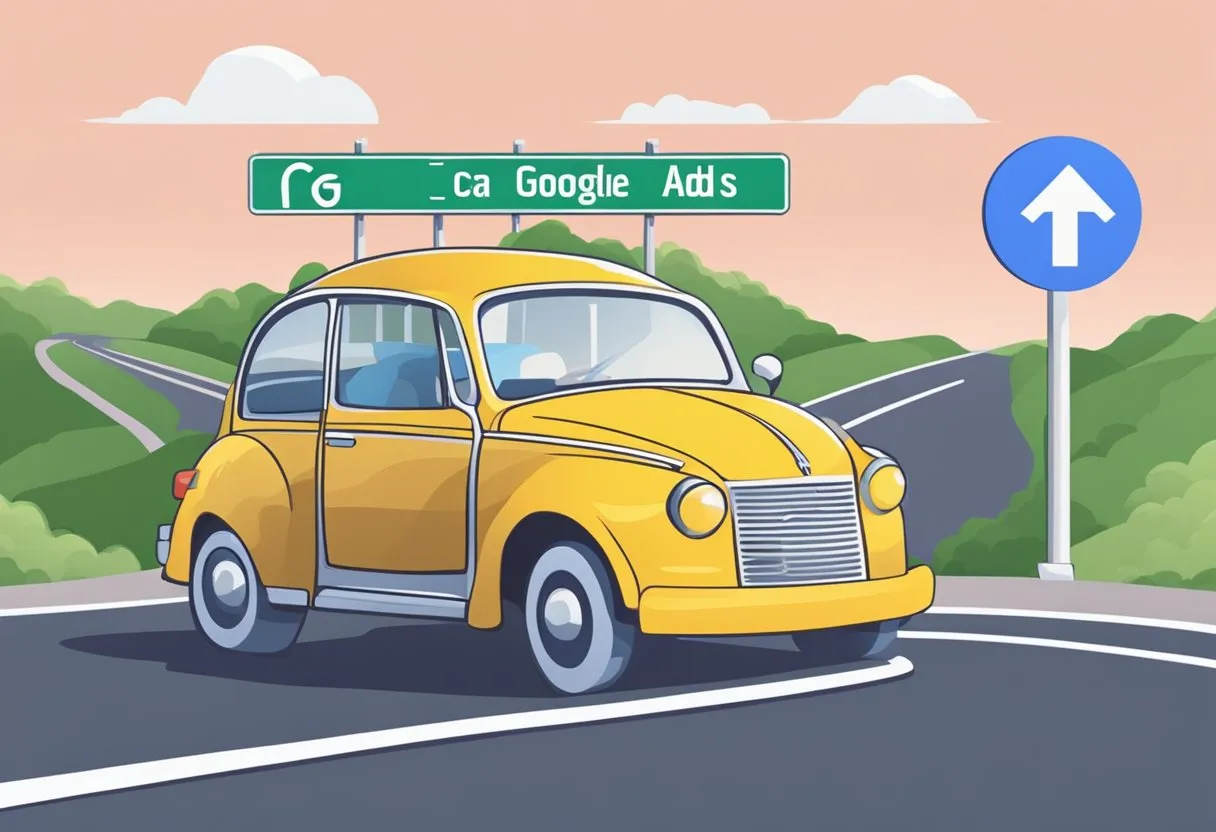Avoiding low-quality traffic in Google Ads: Strategies for campaign optimization
Google Ads is a powerful tool for businesses to reach potential customers. Yet, low-quality traffic can waste ad budgets and harm campaign performance. Focusing on high-quality traffic in Google Ads campaigns leads to better results and more efficient spending.

Advertisers can take steps to avoid low-quality traffic and improve their ad performance. This includes using targeted keywords, creating relevant ad copy, and designing effective landing pages. Google also has systems in place to detect and filter invalid activity in ad campaigns.
By understanding how to attract quality traffic, businesses can make the most of their Google Ads investments. This means higher conversion rates, lower costs, and better overall campaign success.
Key Takeaways
- Targeted keywords and relevant ad copy help attract quality traffic
- Well-designed landing pages improve user experience and conversions
- Regular monitoring of campaign metrics enables quick adjustments for better performance
Understanding Google Ads and Quality Traffic
Google Ads relies on high-quality traffic to deliver effective campaigns. The quality of traffic impacts ad performance, costs, and overall campaign success.
Essentials of High-Quality Traffic
Quality traffic in Google Ads refers to users who are likely to engage with ads and take desired actions. Click-through rates are a key indicator of traffic quality. High CTRs suggest that ads are relevant to users’ search intent.
Conversion rates also play a crucial role. They measure how often clicks lead to valuable actions like purchases or sign-ups. Advertisers should focus on attracting users who are more likely to convert.
Impression share shows how often ads appear for relevant searches. A high impression share in valuable markets indicates strong traffic quality.
Role of Quality Score and Ad Rank
Quality Score is Google’s rating of ad quality and relevance. It affects ad placement and costs. Higher Quality Scores can lead to better ad positions and lower costs per click.
Ad Rank determines an ad’s position on the search results page. It’s based on bid amount, Quality Score, and expected impact of ad extensions. Better Ad Rank often results in more prominent ad placement.
Google uses these metrics to ensure users see high-quality ads. This benefits both users and advertisers by creating a more effective advertising ecosystem.
Keyword Optimization Strategies
Effective keyword optimization is crucial for Google Ads success. It helps target the right audience, reduce wasted ad spend, and improve campaign performance.
Importance of Relevant Keywords
Choosing the right keywords is key to reaching potential customers. Relevant keywords improve ad relevance and quality score. This leads to better ad positions and lower costs.
Start by researching keywords related to your products or services. Use tools like Google Keyword Planner to find popular search terms. Group similar keywords into themed ad groups.
Consider using long-tail keywords. These are more specific phrases that often have less competition. They can attract highly targeted traffic.
Regularly review keyword performance. Remove or adjust underperforming keywords. Add new keywords as trends change.
Utilizing Negative Keywords
Negative keywords help filter out irrelevant traffic. They prevent ads from showing for unrelated searches. This saves money and improves ad relevance.
Start by brainstorming terms unrelated to your business. Add these as negative keywords. For example, a luxury car dealer might add “cheap” or “budget” as negatives.
Review search terms reports regularly. Look for irrelevant searches triggering your ads. Add these as new negative keywords.
Use negative keyword lists. Apply these across multiple campaigns for efficiency. Update lists regularly as you discover new irrelevant terms.
Optimizing for Search Intent
Understanding search intent helps match ads to user needs. This improves click-through rates and conversions.
Analyze the language used in search queries. Identify if users are looking to buy, research, or find local services. Tailor ad copy and landing pages to match this intent.
Use keyword match types strategically. Broad match can help discover new relevant searches. Phrase and exact match offer more control over when ads appear.
Test different ad copies for the same keywords. See which ones resonate best with searchers. Use this insight to refine your keyword strategy and ad messaging.
Enhancing Landing Page Experience
A strong landing page experience boosts ad performance and increases conversions. It aligns with user expectations and makes taking action easy.
Alignment with Ad Content
Landing page experience starts with matching ad promises. The page should deliver what the ad offered. Use similar headlines, images, and offers on both the ad and landing page.
Keep the message consistent. If your ad mentions a 20% discount, feature it prominently on the landing page. This builds trust and reduces bounce rates.
Make navigation simple. Users should find what they want quickly. Place important info above the fold. Use clear headings and bullet points to highlight key benefits.
Include relevant keywords naturally. This helps Google understand your page content. It can improve your Quality Score and ad rank.
Improving Conversion Rates
To boost conversions, make your call-to-action (CTA) stand out. Use contrasting colors and action words. Place CTAs where users can easily see them.
Optimize page load speed. Slow pages drive visitors away. Compress images and minimize code to speed things up.
Use social proof like customer reviews or testimonials. This builds credibility and encourages action.
A/B test different elements on your landing page. Try various headlines, images, or CTA placements. Keep what works best.
Make forms short and simple. Ask only for essential information. Long forms can scare users away.
Ensure your page works well on mobile devices. Many users browse on phones or tablets. A responsive design improves user experience across all devices.
Effective Ad Group Management

Ad group management is key to running successful Google Ads campaigns. Well-structured ad groups with strategic use of extensions can boost ad relevance and quality, leading to better performance and less wasted spend.
Structuring Ad Groups for Success
Ad groups should contain closely related keywords and ads. This tight focus helps improve quality scores and ad relevance. Aim for 10-20 keywords per ad group. Use single keyword ad groups (SKAGs) for top-performing terms.
Create separate ad groups for different product lines or services. This allows for more targeted ad copy. For example, a shoe store might have ad groups for “running shoes”, “dress shoes”, and “casual sneakers”.
Use negative keywords to prevent ads from showing for irrelevant searches. This helps avoid low-quality traffic and wasted spend.
Monitor ad group performance regularly. Pause or remove underperforming keywords. Split large ad groups if they become unwieldy.
Strategic Use of Ad Extensions
Ad extensions provide extra information and increase the visibility of ads. They can improve click-through rates without additional cost.
Common types of extensions include:
- Sitelink extensions
- Callout extensions
- Structured snippet extensions
- Call extensions
- Location extensions
Match extensions to ad group themes. For a “women’s dresses” ad group, use sitelinks to specific dress categories like “cocktail dresses” or “summer dresses”.
Use callout extensions to highlight unique selling points. Examples include “Free Shipping” or “24/7 Customer Support”.
Test different combinations of extensions to see what works best. Google will show the most relevant extensions based on user context and past performance.
Maximizing ROI Through Metrics and Bidding

Effective use of metrics and smart bidding strategies can greatly improve your Google Ads ROI. By focusing on key performance indicators and implementing intelligent bidding techniques, advertisers can optimize their campaigns for better results.
Key Performance Indicators to Monitor
To maximize ROI, it’s crucial to track the right metrics. Click-through rate (CTR) is a vital indicator of ad relevance and appeal. A high CTR suggests your ads resonate with users, potentially leading to more conversions.
Cost per click (CPC) directly impacts your budget efficiency. Lower CPCs allow for more clicks within your budget, increasing potential conversions.
Conversion rate measures the percentage of clicks that result in desired actions. A higher conversion rate indicates effective targeting and landing page optimization.
Cost per conversion helps gauge the efficiency of your ad spend. Lower costs per conversion mean better ROI.
Impressions show how often your ads are displayed. This metric helps assess your ad’s reach and visibility.
Smart Bidding and CPC Management
Smart bidding strategies use machine learning to optimize bids for each auction. These automated tools can help improve ROI by considering multiple signals that impact performance.
Target CPA (Cost Per Acquisition) bidding aims to get as many conversions as possible at your set target cost per conversion. This strategy works well for advertisers with specific CPA goals.
Maximize Conversions bidding focuses on getting the most conversions within your budget. It’s ideal for those prioritizing conversion volume over specific CPA targets.
Manual CPC bidding gives you full control over your bids. It requires more hands-on management but can be effective for experienced advertisers who closely monitor performance.
Bid adjustments allow you to increase or decrease bids based on factors like device, location, or time of day. This fine-tuning can help improve ROI by focusing spend on high-performing segments.